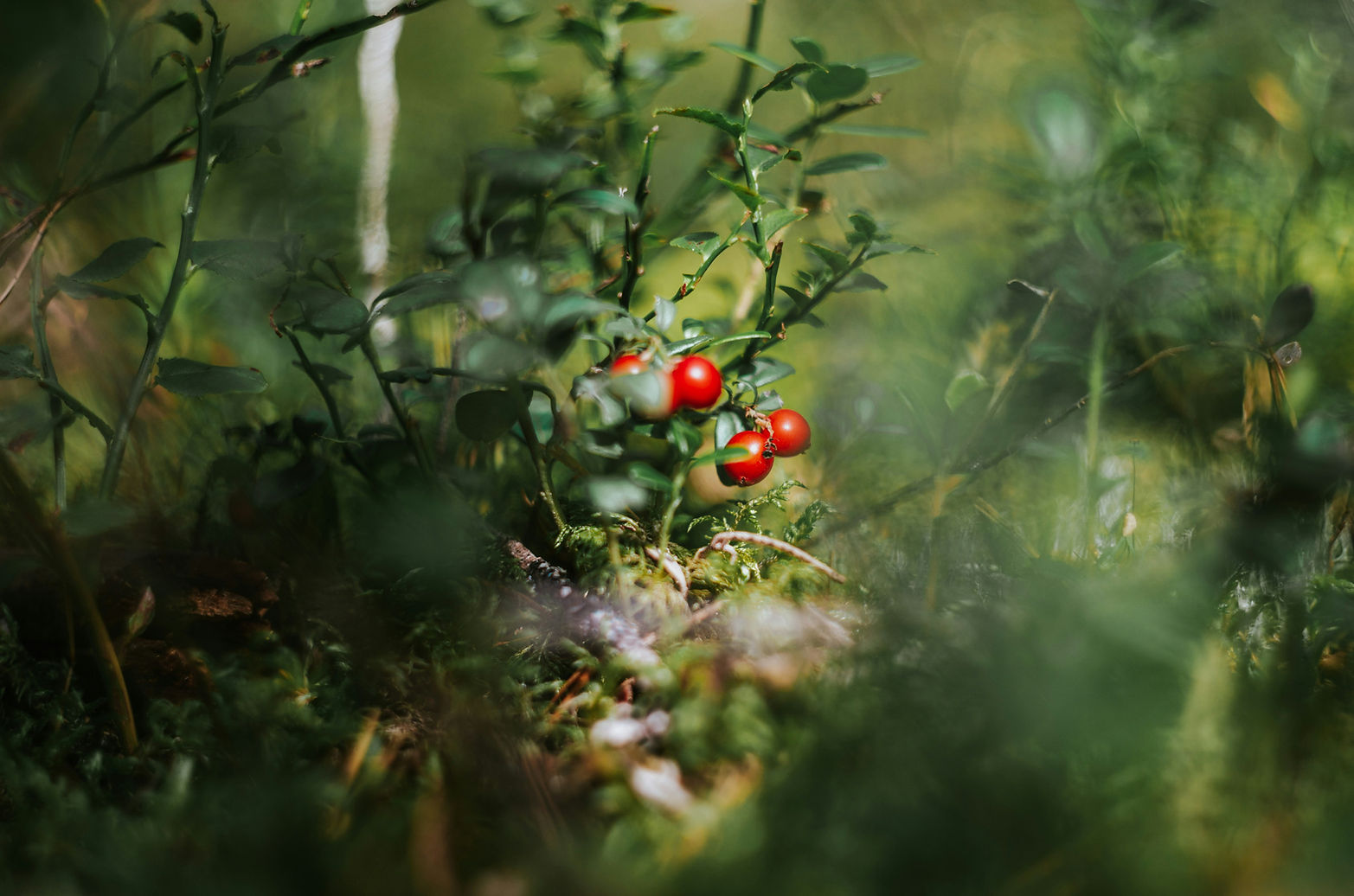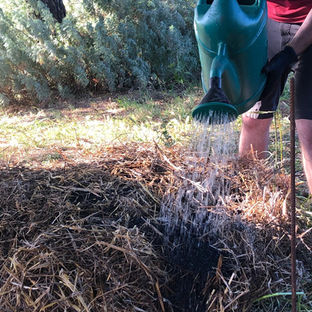TERRA-PRETA,
MAKING SOIL
INSPIRA Permaculture
Like water and sun, good healthy and fertile soil is a key element for any type of farm. It is used in all of our projects and ideally will cover the totality of our land. This is an ambitious objective, given the fact that most farm land here (and around the world****** - see bottom of page for sources and definitions) has lost the majority of its topsoil* or humus** layer, the most fertile part of the soil.
Because this is such a key element in our project, one of the first things we did was collect the materials needed to create a very special, potent and fertile kind of soil that mimics what scientists called "Terra-Preta"****. Named after the re-discovery of this amazingly fertile soil deep in the Amazon called Terra Preta do Indio and man-made, created by Amazonian civilizations some 7000 years ago.
But let us explain first the basics and then the recipe!


WHAT IS SOIL?
Soil is the loose surface material that covers most land. It consists of 2 main components:
-
inorganic particles and
-
organic matter.
Soil provides the structural support for plants used in agriculture and is also their source of water and nutrients.
Soils vary greatly in their chemical and physical properties. Processes such as leaching, weathering and microbial activity combine to make a whole range of different soil types. Each type has particular strengths and weaknesses for agricultural production.

SOIL CHARACTERISTICS
The physical characteristics of soil include all the aspects that you can see and touch, such as:
-
Texture
-
Colour
-
Depth
-
Structure
-
Porosity (the space between the particles)
-
Stone content.
Good soil structure contributes to soil and plant health, allowing water and air movement into and through the soil profile. While some soils are naturally better structured than others, some physical characteristics of soils can be changed with good management.



IDEAL SOIL COMPOSITION FOR CULTIVATION
The texture of soil is mostly determined by the proportions of inorganic particles. For example:
-
Gravel: particles larger than 2mm in diameter
-
Fine sand: particles between 0.2mm and 0.02mm in diameter
-
Silt: particles between 0.02mm and 0.002mm in diameter
-
Clay: particles less than 0.002mm in diameter.
Soil color often indicates the amount of organic matter it contains: the darker the soil, the more organic matter.
Soil Structure is the arrangement of soil particles and pore spaces between. A soil structure that is beneficial to plant growth has stable aggregates between 0.5 and 2mm in diameter. Such soils have good aeration and drainage.
The drainage of a soil is an important characteristic to assess, as many plants prefer well-drained soils.
If a soil is poorly drained, like most clay rich soils, oxygen cannot get to the plant roots sufficiently, which can stunt or kill the plant. However, soils that are very well drained, such as sandy soils, can limit the plant's possibility to capture of water in drier environments (or drought).

HOW IS TERRA-PRETA DIFFERENT?
The common tropical forest soils are notoriously thin and contain high levels of clay, silt or sand, which typically makes them nutrient-poor. This is due to the fact that tropical forests have a high capability of decomposing organic matter. Thus, it's important to note that the man-made Terra-Preta soil is not present everywhere in the Amazon or other Tropical forests.
Terra-Preta has a characteristic dark color (preta means dark in Portuguese). This is due to the high content of organic material and especially to the black charcoal or "biochar" incorporated in it. Additionally, it sometimes contains pottery shards.
What makes the biochar such a special feature in the Terra-Preta soil is that the microscopic structure of biochar is highly porous, which allows to (1) help retain water and nutrients and release them slowly, and (2) provides for minuscule cavities that serve as living spaces for the micro-organisms that decompose the organic matter and that maintain the soil alive and especially fertile. More on Biochar below.
Terra-Preta is one of the most fertile and long-term high-yielding soils made by man to date, lasting more than 1000 years.



BIOCHAR IMPROVES SOIL AND SEQUESTERS CO2
Biochar is a charcoal derived from organic material through pyrolysis (burning with little to no oxygen), that offers significant environmental benefits. Its production sequesters atmospheric carbon dioxide, reducing greenhouse gas emissions (1 ton of biochar potentially removes 2-3 tonnes of CO₂). In agriculture, biochar enhances crop yields, reduces fertilizer and irrigation needs, and minimizes nitrous oxide (N₂O) emissions, by up to 80% *** . When biochar is buried in the ground, it can store carbon for hundreds or even thousands of years.
Biochar is highly porous and has a large structure area (see image) capable of sequestering not only large amounts of CO2, but also pollutants such as pesticides and heavy metals, like lead and cadmium in crops, as well as recapture spilled oil.
Biochar presents a valuable opportunity for mitigating climate change while improving agricultural productivity and water quality.

IN CONCLUSION
Agroforestry and regenerative agriculture or permaculture projects such as ours embrace the use of these highly fertile soils inspired by Terra-Preta. It highly resonates with our aim to mimic natural ecosystems and processes, integrating trees, crops, and livestock manure to create the soil. The method enhances soil health, biodiversity, and ecosystem resilience, while mitigating climate change.
Thus, Terra Preta offers a sustainable agricultural system, combining ancient wisdom with modern science, and emphasizes working in harmony with nature for a greener, healthier future.
By understanding Terra Preta, we can create fertile soils, abundant harvests, and thriving ecosystems.



HOW TO MAKE
TERRA-PRETA
Although the precise ratios and interplay of the components remain a subject of scientific intrigue, today we can try to replicate the making of Terra-Preta as best we can by integrating the new elements to some more traditional permaculture humus composting techniques. So we enhance our compost with biochar and ensure the presence of micro-organisms using manure and something called "compost-tea".
The ingredients get layered in 7-9 times in the same order, always adding compost tea and water. The pile will soon raise it's temperature to some 60 degrees Celcius in a day or two. The piles are covered for a over a month. After that, the piles are turned over and covered again for another 3-4 months. (see list of ingredients below)

OUR TERRA-PRETA INGREDIENTS
Here are the ingredients we use:
-
Dry organic material (branches or wood chips)
-
Fresh organic material (greens or freshly cut grass, bushes, etc.)
-
Fresh manure
We use the one from our neighbor's sheep flock -
Biochar thinly grinded
We produce it ourselves using a "Kontiki" oven, which keeps the oxygen levels low and thus not allowing the wood to turn into ashes but stays in the form of charcoal. -
Straw
-
Water
-
Compost tea
Made using a regenerative compost extract microbe activator, which we place in a reactor for 24 hours. Some companies specialize in making this product. -
Grass or hay.
-
A fleece cover to keep humidity and temperature and the piles intact in these windy part of Tuscany.
In the original Terra Preta of the Amazon*****, you will also find listed clay ceramic chards, animal bones and blood. We will consider adding clay at some point, but for now this is our Permaculture-based recipe's ingredient list.

A GALLERY OF THE MAKING PROCESS




















